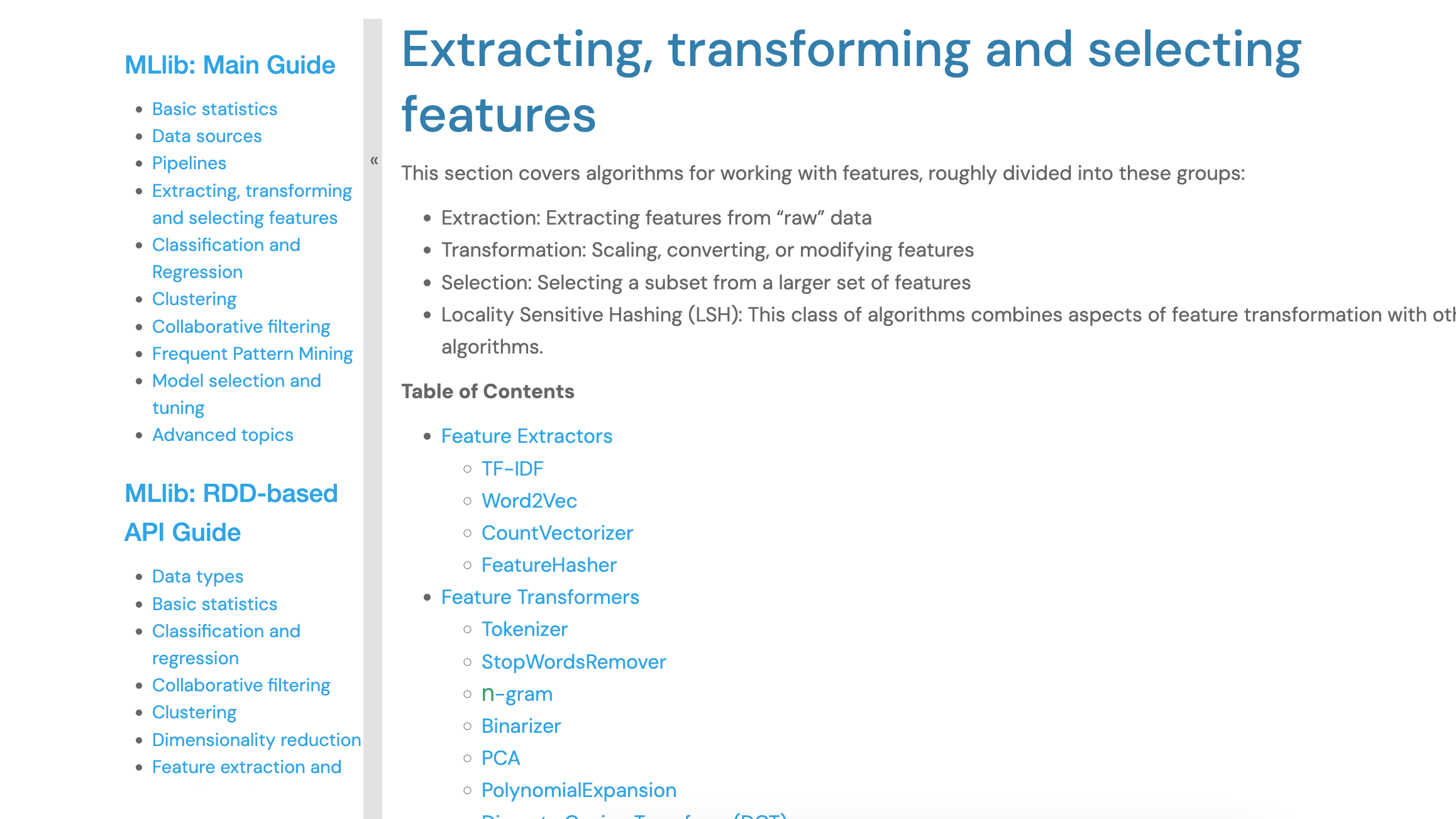论文链接:https://arxiv.org/abs/2010.11929
项目链接:https://github.com/google-research/vision_transformer
本文代码链接:https://gitcode.com/gh_mirrors/de/deep-learning-for-image-processing/tree/master/pytorch_classification/vision_transformer
ViT架构简述
Vision Transformer,简称ViT,是Transformer在视觉任务中的第一个落地模型。自此,NLP和CV开始大一统,并进一步推动了多模态模型的发展。ViT的很多设计思路参考了NLP中的BERT模型,其本质是希望将Transformer架构不经任何修改的前提下,通过巧妙的图像预处理方法,将Transformer无缝衔接到任何一个CV任务中。
ViT的整体架构图如下所示,其基本的思想是将一幅 224 × 224 224\times 224 224×224的图像切分为多个 16 × 16 16\times 16 16×16的Patches,并将这些Patch作为Transformer中的每个Token直接应用到Transformer中。由于在之前的文章中已经详细解读过Transformer的架构,ViT中的Transformer没有任何变动,因此重点讲述ViT对图像专门设计的方法。

由上图可以看出,整个ViT架构包括三个主要的组成部分:Linear Projection(也就是Image Embedding)、Transformer Encoder和MLP Head,其中Transformer Encoder的部分和一般的Transformer并无差异,主要的改进工作集中于图像Embedding层。
Image Embedding
对于一个标准的Transformer,它要求的输出一个大小为 [ b a t c h , l e n g t h , d i m ] [batch, length, dim] [batch,length,dim]的向量,但是对于一个图像而言,其在深度学习中的基本单位是 [ b a t c h , w i d t h , h e i g h t , c h a n n e l = 3 ] [batch, width, height, channel=3] [batch,width,height,channel=3],这明显不是Transformer期望的输入格式。因此,需要一个Embedding层将图像数据嵌入到一个理想的特征空间内。一种直观的思路是,以像素点为单位,将每个2D图像flatten成一个1D的像素序列,这样就可以输入Transformer中。但是,哪怕是对于一幅 224 × 224 224 \times 224 224×224大小的图像,Flatten后就会有 224 × 224 224 \times 224 224×224个像素点参与注意力计算,随着输入图片分辨率的增加,模型计算压力会呈指数级增长,显然这不是最优的解法。
正如作者的论文题目”AN IMAGE IS WORTH 16X16 WORDS“,每个图像相当于一系列 16 × 16 16 \times 16 16×16大小Patch的组合,此时对于一幅 224 × 224 224 \times 224 224×224的图像而言,就可以拆分成 n u m = 22 4 2 1 6 2 = 196 num = \frac{224 ^ 2}{16^2} = 196 num=1622242=196个Patch。换言之,一张 224 × 224 224 \times 224 224×224的图,就是由196个Words组成的!
那如何规定输入的Word/Patch的维度呢?这时候就可以采用之前提到的最直接的思路:每个Word/Patch大小是 16 × 16 × 3 16 \times 16 \times 3 16×16×3,3为通道数,因此可以把每个Word/Patch的2D数据进行Flatten,成为一个 16 × 16 × 3 = 768 16 \times 16 \times 3 = 768 16×16×3=768维的1D向量。综上,我们就把一个 [ b a t c h , w i d t h , h e i g h t , 3 ] [batch, width, height, 3] [batch,width,height,3]的输入,转换为了 [ b a t c h , 196 , 768 ] [batch, 196, 768] [batch,196,768]格式的输入,这样就可以送入Transformer中进行编码了。
Posional Embedding
对图像数据进行Embedding后,我们可以得到一个大小为 [ b a t c h , 196 , 768 ] [batch, 196, 768] [batch,196,768]的Image Embedding,根据之前对Transformer的介绍,为了标注每个词在句子中的先后顺序,Transformer采用正余弦位置编码给每个词向量加入了一个Positional Embedding。对于图像而言,我们将图像切分为Patch后,同样也需要一个位置信息,来标注Patch的顺序,因为注意力计算本身是忽略Token之间位置信息的。原文中,作者采用了一个可学习的1D位置编码,并且通过实验验证,2D位置编码并没有展现出更出色的性能。

关于CLS
这里作者参考了BERT的Class Token的设计,在原有的Patch序列中加入了一个可学习的Token,即CLS。认为这个Token在不断的执行注意力计算的过程中,是可以学习到整个图像的全局信息的,并且只需要将这个Token送入后续的下游任务,即可取得十分出色的效果。这个操作类似对196个Patch的向量进行平均,从实现效果的角度看没有太大差别,但是对学习率有不同的要求:

代码调试记录
本文采用ViT的torch复现代码,下面将结合代码对照论文进行讲解。
代码中提供了多种ViT版本,我们这里只选择调试最基础的Vit_base_patch_16_224。
def vit_base_patch16_224(num_classes: int = 1000): """ ViT-Base model (ViT-B/16) from original paper (https://arxiv.org/abs/2010.11929). ImageNet-1k weights @ 224x224, source https://github.com/google-research/vision_transformer. weights ported from official Google JAX impl: 链接: https://pan.baidu.com/s/1zqb08naP0RPqqfSXfkB2EA 密码: eu9f """ model = VisionTransformer(img_size=224, patch_size=16, embed_dim=768, depth=12, num_heads=12, representation_size=None, num_classes=num_classes) return model def vit_base_patch16_224_in21k(num_classes: int = 21843, has_logits: bool = True): """ ViT-Base model (ViT-B/16) from original paper (https://arxiv.org/abs/2010.11929). ImageNet-21k weights @ 224x224, source https://github.com/google-research/vision_transformer. weights ported from official Google JAX impl: https://github.com/rwightman/pytorch-image-models/releases/download/v0.1-vitjx/jx_vit_base_patch16_224_in21k-e5005f0a.pth """ model = VisionTransformer(img_size=224, patch_size=16, embed_dim=768, depth=12, num_heads=12, representation_size=768 if has_logits else None, num_classes=num_classes) return model def vit_base_patch32_224(num_classes: int = 1000): """ ViT-Base model (ViT-B/32) from original paper (https://arxiv.org/abs/2010.11929). ImageNet-1k weights @ 224x224, source https://github.com/google-research/vision_transformer. weights ported from official Google JAX impl: 链接: https://pan.baidu.com/s/1hCv0U8pQomwAtHBYc4hmZg 密码: s5hl """ model = VisionTransformer(img_size=224, patch_size=32, embed_dim=768, depth=12, num_heads=12, representation_size=None, num_classes=num_classes) return model def vit_base_patch32_224_in21k(num_classes: int = 21843, has_logits: bool = True): """ ViT-Base model (ViT-B/32) from original paper (https://arxiv.org/abs/2010.11929). ImageNet-21k weights @ 224x224, source https://github.com/google-research/vision_transformer. weights ported from official Google JAX impl: https://github.com/rwightman/pytorch-image-models/releases/download/v0.1-vitjx/jx_vit_base_patch32_224_in21k-8db57226.pth """ model = VisionTransformer(img_size=224, patch_size=32, embed_dim=768, depth=12, num_heads=12, representation_size=768 if has_logits else None, num_classes=num_classes) return model def vit_large_patch16_224(num_classes: int = 1000): """ ViT-Large model (ViT-L/16) from original paper (https://arxiv.org/abs/2010.11929). ImageNet-1k weights @ 224x224, source https://github.com/google-research/vision_transformer. weights ported from official Google JAX impl: 链接: https://pan.baidu.com/s/1cxBgZJJ6qUWPSBNcE4TdRQ 密码: qqt8 """ model = VisionTransformer(img_size=224, patch_size=16, embed_dim=1024, depth=24, num_heads=16, representation_size=None, num_classes=num_classes) return model def vit_large_patch16_224_in21k(num_classes: int = 21843, has_logits: bool = True): """ ViT-Large model (ViT-L/16) from original paper (https://arxiv.org/abs/2010.11929). ImageNet-21k weights @ 224x224, source https://github.com/google-research/vision_transformer. weights ported from official Google JAX impl: https://github.com/rwightman/pytorch-image-models/releases/download/v0.1-vitjx/jx_vit_large_patch16_224_in21k-606da67d.pth """ model = VisionTransformer(img_size=224, patch_size=16, embed_dim=1024, depth=24, num_heads=16, representation_size=1024 if has_logits else None, num_classes=num_classes) return model def vit_large_patch32_224_in21k(num_classes: int = 21843, has_logits: bool = True): """ ViT-Large model (ViT-L/32) from original paper (https://arxiv.org/abs/2010.11929). ImageNet-21k weights @ 224x224, source https://github.com/google-research/vision_transformer. weights ported from official Google JAX impl: https://github.com/rwightman/pytorch-image-models/releases/download/v0.1-vitjx/jx_vit_large_patch32_224_in21k-9046d2e7.pth """ model = VisionTransformer(img_size=224, patch_size=32, embed_dim=1024, depth=24, num_heads=16, representation_size=1024 if has_logits else None, num_classes=num_classes) return model def vit_huge_patch14_224_in21k(num_classes: int = 21843, has_logits: bool = True): """ ViT-Huge model (ViT-H/14) from original paper (https://arxiv.org/abs/2010.11929). ImageNet-21k weights @ 224x224, source https://github.com/google-research/vision_transformer. NOTE: converted weights not currently available, too large for github release hosting. """model = VisionTransformer(img_size=224, patch_size=14, embed_dim=1280, depth=32, num_heads=16, representation_size=1280 if has_logits else None, num_classes=num_classes) return model
由于只是调试代码,我们并不调用正经的train.py,而是用一个简单的调用脚本来实现:
if __name__ == "__main__": # 构建ViT模型 model = vit_base_patch16_224() # 构建输入数据[b, w, h, c] image = torch.randn((2, 3, 224, 224)) # 输入模型 outputs = model(image) print(outputs.shape)
首先需要加载一个vit_base模型,进入ViT的初始化部分:
class VisionTransformer(nn.Module): def __init__(self, img_size=224, patch_size=16, in_c=3, num_classes=1000, embed_dim=768, depth=12, num_heads=12, mlp_ratio=4.0, qkv_bias=True, qk_scale=None, representation_size=None, distilled=False, drop_ratio=0., attn_drop_ratio=0., drop_path_ratio=0., embed_layer=PatchEmbed, norm_layer=None, act_layer=None): """ Args: img_size (int, tuple): input image size patch_size (int, tuple): patch size in_c (int): number of input channels num_classes (int): number of classes for classification head embed_dim (int): embedding dimension depth (int): depth of transformer num_heads (int): number of attention heads mlp_ratio (int): ratio of mlp hidden dim to embedding dim qkv_bias (bool): enable bias for qkv if True qk_scale (float): override default qk scale of head_dim ** -0.5 if set representation_size (Optional[int]): enable and set representation layer (pre-logits) to this value if set distilled (bool): model includes a distillation token and head as in DeiT models drop_ratio (float): dropout rate attn_drop_ratio (float): attention dropout rate drop_path_ratio (float): stochastic depth rate embed_layer (nn.Module): patch embedding layer norm_layer: (nn.Module): normalization layer"""super(VisionTransformer, self).__init__() self.num_classes = num_classes self.num_features = self.embed_dim = embed_dim # num_features for consistency with other models self.num_tokens = 2 if distilled else 1 norm_layer = norm_layer or partial(nn.LayerNorm, eps=1e-6) # nn.LayerNormact_layer = act_layer or nn.GELU # nn.GELUself.patch_embed = embed_layer(img_size=img_size, patch_size=patch_size, in_c=in_c, embed_dim=embed_dim) num_patches = self.patch_embed.num_patches self.cls_token = nn.Parameter(torch.zeros(1, 1, embed_dim)) self.dist_token = nn.Parameter(torch.zeros(1, 1, embed_dim)) if distilled else None self.pos_embed = nn.Parameter(torch.zeros(1, num_patches + self.num_tokens, embed_dim)) self.pos_drop = nn.Dropout(p=drop_ratio) dpr = [x.item() for x in torch.linspace(0, drop_path_ratio, depth)] # stochastic depth decay rule self.blocks = nn.Sequential(*[ Block(dim=embed_dim, num_heads=num_heads, mlp_ratio=mlp_ratio, qkv_bias=qkv_bias, qk_scale=qk_scale, drop_ratio=drop_ratio, attn_drop_ratio=attn_drop_ratio, drop_path_ratio=dpr[i], norm_layer=norm_layer, act_layer=act_layer) for i in range(depth) ]) self.norm = norm_layer(embed_dim) # Representation layer if representation_size and not distilled: self.has_logits = True self.num_features = representation_size self.pre_logits = nn.Sequential(OrderedDict([ ("fc", nn.Linear(embed_dim, representation_size)), ("act", nn.Tanh()) ])) else: self.has_logits = False self.pre_logits = nn.Identity() # Classifier head(s) self.head = nn.Linear(self.num_features, num_classes) if num_classes > 0 else nn.Identity() self.head_dist = None if distilled: self.head_dist = nn.Linear(self.embed_dim, self.num_classes) if num_classes > 0 else nn.Identity() # Weight init nn.init.trunc_normal_(self.pos_embed, std=0.02) if self.dist_token is not None: nn.init.trunc_normal_(self.dist_token, std=0.02) nn.init.trunc_normal_(self.cls_token, std=0.02) self.apply(_init_vit_weights)
可以看到这是一个12头的ViT,一共有12层,num_classes代表最后的分类任务有几个类别,同时也是最后一层MLP的输出维度。
对于Image Embedding部分,代码中用一个独立的class实现:
class PatchEmbed(nn.Module): """ 2D Image to Patch Embedding """ def __init__(self, img_size=224, patch_size=16, in_c=3, embed_dim=768, norm_layer=None): super().__init__() img_size = (img_size, img_size) patch_size = (patch_size, patch_size) self.img_size = img_size self.patch_size = patch_size self.grid_size = (img_size[0] // patch_size[0], img_size[1] // patch_size[1]) self.num_patches = self.grid_size[0] * self.grid_size[1] self.proj = nn.Conv2d(in_c, embed_dim, kernel_size=patch_size, stride=patch_size) self.norm = norm_layer(embed_dim) if norm_layer else nn.Identity() def forward(self, x): B, C, H, W = x.shape assert H == self.img_size[0] and W == self.img_size[1], \ f"Input image size ({H}*{W}) doesn't match model ({self.img_size[0]}*{self.img_size[1]})." # flatten: [B, C, H, W] -> [B, C, HW] # transpose: [B, C, HW] -> [B, HW, C] x = self.proj(x).flatten(2).transpose(1, 2) x = self.norm(x) return x
并且在Transformer类中用以下代码实现调用:
self.patch_embed = embed_layer(img_size=img_size, patch_size=patch_size, in_c=in_c, embed_dim=embed_dim)
可以看到,Patch Embedding中主要包括一个Conv2D和Norm层,在第24行代码中,输入的x[b, c, h, w]会通过一个Conv2D转换为一个768维度的向量,得到一个 [ b , d i m , h , w ] [b, dim, h, w] [b,dim,h,w]的特征,随后会将最后两个维度进行Flatten,得到 [ b , d i m , h ∗ w ] [b, dim, h*w] [b,dim,h∗w]的特征嵌入,并交换最后两个维度即可得到前文所述的 [ b , h ∗ w , 768 ] [b, h*w, 768] [b,h∗w,768]的特征。PatchEmbedding中的Norm Layer是一个Identity层,即直接输出不做任何操作。
第37行代码是对CLS Token的设置:
self.cls_token = nn.Parameter(torch.zeros(1, 1, embed_dim))
通过nn.Parameter来定义一个可学习的Token,这里是首先定义一个单位token,在后续会拓展到和输入特征一致的大小。
第39行代码是Positional Embedding的实现:
self.pos_embed = nn.Parameter(torch.zeros(1, num_patches + self.num_tokens, embed_dim))
同样也是定义了一个可学习的位置编码,而不是transformer中的正余弦编码,大小为 [ 1 , 196 + 1 , 786 ] [1, 196 + 1, 786] [1,196+1,786],初始化为0。
随后ViT定义了12层的Transformer Encoder:

具体的代码如下:
class Block(nn.Module): def __init__(self, dim, num_heads, mlp_ratio=4., qkv_bias=False, qk_scale=None, drop_ratio=0., attn_drop_ratio=0., drop_path_ratio=0., act_layer=nn.GELU, norm_layer=nn.LayerNorm): super(Block, self).__init__() self.norm1 = norm_layer(dim) self.attn = Attention(dim, num_heads=num_heads, qkv_bias=qkv_bias, qk_scale=qk_scale, attn_drop_ratio=attn_drop_ratio, proj_drop_ratio=drop_ratio) # NOTE: drop path for stochastic depth, we shall see if this is better than dropout here self.drop_path = DropPath(drop_path_ratio) if drop_path_ratio > 0. else nn.Identity() self.norm2 = norm_layer(dim) mlp_hidden_dim = int(dim * mlp_ratio) self.mlp = Mlp(in_features=dim, hidden_features=mlp_hidden_dim, act_layer=act_layer, drop=drop_ratio) def forward(self, x): x = x + self.drop_path(self.attn(self.norm1(x))) x = x + self.drop_path(self.mlp(self.norm2(x))) return x
可以看到,整个Block中包括两层Layer_Norm、一个多头自注意力和一个MLP,和论文中的示例图可以对应。
我们再回到Transformer类中,在完成了Transformer Encoder的定义后,最后需要定义一个分类头,即一个简单的MLP即完成了对Transformer的定义过程。整个Transformer的结构图下:
VisionTransformer((patch_embed): PatchEmbed((proj): Conv2d(3, 768, kernel_size=(16, 16), stride=(16, 16))(norm): Identity())(pos_drop): Dropout(p=0.0, inplace=False)(blocks): Sequential((0-11): Block((norm1): LayerNorm((768,), eps=1e-06, elementwise_affine=True)(attn): Attention((qkv): Linear(in_features=768, out_features=2304, bias=True)(attn_drop): Dropout(p=0.0, inplace=False)(proj): Linear(in_features=768, out_features=768, bias=True)(proj_drop): Dropout(p=0.0, inplace=False))(drop_path): Identity()(norm2): LayerNorm((768,), eps=1e-06, elementwise_affine=True)(mlp): Mlp((fc1): Linear(in_features=768, out_features=3072, bias=True)(act): GELU(approximate='none')(fc2): Linear(in_features=3072, out_features=768, bias=True)(drop): Dropout(p=0.0, inplace=False))))(norm): LayerNorm((768,), eps=1e-06, elementwise_affine=True)(pre_logits): Identity()(head): Linear(in_features=768, out_features=1000, bias=True)
)
下面我们通过输入一个Image信息来调试ViT的运行流程,首先看一下Transformer的forward函数:
def forward_features(self, x): # [B, C, H, W] -> [B, num_patches, embed_dim] x = self.patch_embed(x) # [B, 196, 768] # [1, 1, 768] -> [B, 1, 768] cls_token = self.cls_token.expand(x.shape[0], -1, -1) if self.dist_token is None: x = torch.cat((cls_token, x), dim=1) # [B, 197, 768] else: x = torch.cat((cls_token, self.dist_token.expand(x.shape[0], -1, -1), x), dim=1) x = self.pos_drop(x + self.pos_embed) x = self.blocks(x) x = self.norm(x) if self.dist_token is None: return self.pre_logits(x[:, 0]) else: return x[:, 0], x[:, 1] def forward(self, x): x = self.forward_features(x) if self.head_dist is not None: x, x_dist = self.head(x[0]), self.head_dist(x[1]) if self.training and not torch.jit.is_scripting(): # during inference, return the average of both classifier predictions return x, x_dist else: return (x + x_dist) / 2 else: x = self.head(x) return x
forward接受一个输入图像 [ 2 , 3 , 224 , 224 ] [2, 3, 224, 224] [2,3,224,224],随后首先通过一个self.forward_features(x)函数对原始图像信息进行编码,即使调用PatchEmbed进行特征嵌入,会返回一个大小为 [ 2 , 196 , 768 ] [2, 196, 768] [2,196,768]的Patch特征。随后对cls_token在Batch维度上进行扩展,即对每个Batch上的数据都添加一个CLS Token。
cls_token = self.cls_token.expand(x.shape[0], -1, -1)
随后通过以下代码,将CLS Token和Patch Token拼接起来:
if self.dist_token is None: x = torch.cat((cls_token, x), dim=1) # [B, 197, 768]
else: x = torch.cat((cls_token, self.dist_token.expand(x.shape[0], -1, -1), x), dim=1)
将Positional Embedding和token Embedding进行加和:
x = self.pos_drop(x + self.pos_embed)
这样得到的x特征即可送入Attention模块中进行编码,Attention Block的计算流程如下:
def forward(self, x): x = x + self.drop_path(self.attn(self.norm1(x))) x = x + self.drop_path(self.mlp(self.norm2(x))) return x
和下图中的计算流程是一致的。


我们重点看一下Attention的计算流程:
class Attention(nn.Module): def __init__(self, dim, # 输入token的dim num_heads=8, qkv_bias=False, qk_scale=None, attn_drop_ratio=0., proj_drop_ratio=0.): super(Attention, self).__init__() self.num_heads = num_heads head_dim = dim // num_heads self.scale = qk_scale or head_dim ** -0.5 self.qkv = nn.Linear(dim, dim * 3, bias=qkv_bias) self.attn_drop = nn.Dropout(attn_drop_ratio) self.proj = nn.Linear(dim, dim) self.proj_drop = nn.Dropout(proj_drop_ratio) def forward(self, x): # [batch_size, num_patches + 1, total_embed_dim] B, N, C = x.shape # qkv(): -> [batch_size, num_patches + 1, 3 * total_embed_dim] # reshape: -> [batch_size, num_patches + 1, 3, num_heads, embed_dim_per_head] # permute: -> [3, batch_size, num_heads, num_patches + 1, embed_dim_per_head] qkv = self.qkv(x).reshape(B, N, 3, self.num_heads, C // self.num_heads).permute(2, 0, 3, 1, 4) # [batch_size, num_heads, num_patches + 1, embed_dim_per_head] q, k, v = qkv[0], qkv[1], qkv[2] # make torchscript happy (cannot use tensor as tuple) # transpose: -> [batch_size, num_heads, embed_dim_per_head, num_patches + 1] # @: multiply -> [batch_size, num_heads, num_patches + 1, num_patches + 1] attn = (q @ k.transpose(-2, -1)) * self.scale attn = attn.softmax(dim=-1) attn = self.attn_drop(attn) # @: multiply -> [batch_size, num_heads, num_patches + 1, embed_dim_per_head] # transpose: -> [batch_size, num_patches + 1, num_heads, embed_dim_per_head] # reshape: -> [batch_size, num_patches + 1, total_embed_dim] x = (attn @ v).transpose(1, 2).reshape(B, N, C) x = self.proj(x) x = self.proj_drop(x) return x
输入的特征通过一个线性层将输入的 [ 2 , 197 , 768 ] [2, 197, 768] [2,197,768]转换成 [ 2 , 12 , 197 , 64 ] [2, 12, 197, 64] [2,12,197,64]大小的特征,即把768维度的特征分配到12个头上,每个头的维度就是64维。这里和Transformer中的区别在于,QKV直接计算注意力,没有经过pad_attn_mask。
从多头注意力层返回的特征并不是完整的输出,而是只返回CLS Token:
if self.dist_token is None: return self.pre_logits(x[:, 0])
else: return x[:, 0], x[:, 1]
返回的这个CLS Token可以作为后续分类任务的特征。至此,整个ViT的计算流程就完成了。



















